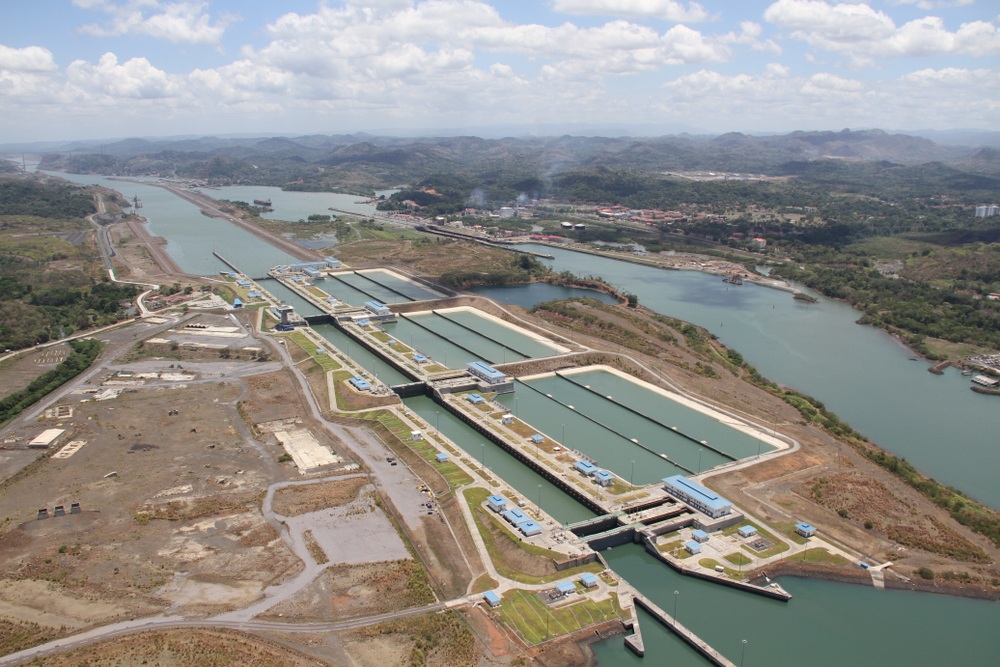Cranes are cool. There is an enormous list of construction projects to which proper crane use is tantamount. All of the world’s biggest, most luxurious, and most expensive projects relied on cranes to suspend and move materials and workers. We’ll explore the 5 most interesting and notable construction projects, all of which will make you admire humanity’s grasp on design, matter, and physics. Towering buildings that scrape the sky, massive bridges that span miles of open water – cranes play a crucial role in bringing these structures to life. The sheer size and complexity of these projects are a testament to human ingenuity. From the iconic Burj Khalifa in Dubai to the breathtaking Millau Viaduct in France, each of these projects is a marvel of modern construction, and the cranes used to build them are an integral part of their success.
The Burj Khalifa, Dubai

This 828-metre skyscraper is 3 times taller than the Eiffel Tower, which may give you some context as to how supermassive it is. When building the world’s tallest freestanding structure, engineers struggled to accommodate the extreme wind load. When buildings become tall and slender they face an issue called vortex shedding, where strong winds circulate around the building, causing it to vibrate or oscillate. The unique design of the Burj Khalifa, including softening the corners of the buttresses and tapering the width of the tower as the height extends, all helped this engineering marvel become the tallest freestanding structure in the world.
The Millau Viaduct
The Millau Viaduct in France is a spectacular cable-stayed bridge that spans the Tarn River valley. At a height of 343 metres, it is officially the tallest bridge in the world, and its design and construction are a testament to human creativity and engineering excellence. Cranes were used extensively during the construction of the bridge, especially in the building of its towers, which required precise positioning of heavy materials at great heights. The viaduct has seven concrete pillars supporting the 16 road components, which are all supported by 154 cable stays. It’s taller than the Eiffel Tower, and only took 3 years of fast-paced work to build.
The Shard

The Shard in London is a towering skyscraper that stands 310 metres tall, making it the tallest building in the United Kingdom. Its distinctive design was inspired by a church spire, reminiscent of an 18th-century painting of London by Venetian painter Canaletto. It got its name from a piece of criticism published in the English Heritage, calling it ‘a shard of glass through the heart of London’. Funnily, the name became official; it stuck. One of the biggest challenges during the construction of The Shard was the installation of the building’s exterior cladding, which consists of over 11,000 glass panels. To install these panels, a custom-built crane was used, which was capable of reaching a height of 360 metres. The crane was the tallest freestanding crane in Europe at the time and was used to install each panel individually.
The Panama Canal Expansion

This massive infrastructure project involved excavating over 200 million cubic metres of material, constructing the world’s largest locks, and installing over 40,000 tons of steel. To accomplish this feat, workers used a variety of cranes, including some of the largest and most advanced in the world. Floating cranes were used to lift and place massive lock gates weighing up to 3,200 tons each, while gantry cranes moved and placed concrete blocks and steel beams. The construction of the Panama Canal Expansion also required the installation of a new water-saving basin system that recycles over 60% of the water used to operate the locks, reflecting a commitment to sustainability and environmental responsibility. The project, which cost approximately $5.25 billion, has greatly improved the efficiency and capacity of the canal, allowing it to accommodate larger ships and reduce wait times for vessels passing through. The construction of the Panama Canal Expansion is a testament to the power of cranes and human ingenuity to overcome seemingly insurmountable engineering challenges.
The Hong Kong-Zhuhai-Macau Bridge

The Hong Kong-Zhuhai-Macau Bridge is an engineering marvel that spans 55 kilometres and connects Hong Kong, Zhuhai, and Macau in China. It is the longest sea bridge in the world and was completed in 2018 after nine years of construction. The construction of the bridge involved the use of over 400,000 tons of steel and the deployment of several massive cranes including the world’s largest crawler crane, which had a lifting capacity of 3,000 tons. The bridge consists of a series of bridges, tunnels, and artificial islands, and is designed to withstand extreme weather conditions, including typhoons and earthquakes. One of the most impressive features of the bridge is the Hong Kong-Zhuhai-Macau Bridge Tunnel, which is the world’s longest sea-crossing tunnel and is built under the Pearl River estuary.
In conclusion, cranes have played an essential role in many of the world’s most impressive construction projects, ranging from skyscrapers to bridges to canals. Their ability to move and place heavy materials with precision and efficiency has allowed engineers to push the boundaries of what is possible and create structures that were once thought impossible. The bottom line is that what human ingenuity has accomplished with the help of equipment like cranes is pretty damn cool. For your – smaller-scale – projects that require cranes, St George Cranes can help you create your own structural marvel.

